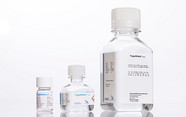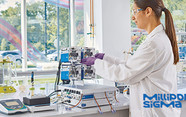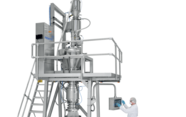The Lab of the Future: Combining Automation with Digital Tools
How do you scale up operations without adding headcount or significantly increasing investment in instrumentation? The answer: automation and workflow scheduling software.
Dean Mulyk | | 6 min read | Discussion
sponsored by Thermo Fisher Scientific
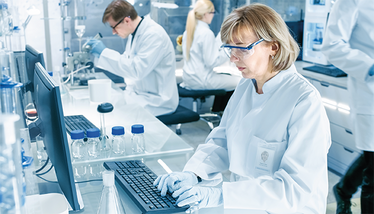
Many of the biggest challenges in analytical laboratories revolve around throughput and efficiency. At the same time, we all recognize that automation can enable labs to run instruments and systems 24/7, accelerating the delivery of results. Contract research organizations (CROs) present a great use case; instead of 30 employees working multiple shifts or weekends to process the required number of samples, CROs can use automation to boost throughput.
But the benefits of automation don’t stop at throughput. Other significant advantages include:
- Regulatory compliance. Automation helps ensure strict process control and secure data capture. Every step is automatically logged and traceable – from sample movement to instrument actions – with any deviations or exceptions immediately flagged for complete auditability.
- Reducing human variability. Automation can remove inconsistency from manual processes. This creates tighter and more meaningful data sets, reduces the need to re-run tests and perform additional rework, and gives companies the information needed to scale with confidence.
- Sustainability. Every time a test needs to be redone, it costs time, money, and resources. Automation reduces waste, optimizes resource use, and improves overall efficiency – all of which feed directly into sustainability goals. It’s not just about cost savings, but about getting more from less and minimizing environmental impact in the process.
The power of workflow scheduling software
At Thermo Fisher Scientific, we believe the lab of the future is the fusion of physical and digital systems. And that’s why we have proactively brought together two key capabilities to create the Digital Science & Automation Solutions team.
The Digital Science Solutions team focuses on laboratory information management systems and enterprise-level software, while the Lab Automation team handles physical automation and robotic systems, combined with scheduling software to orchestrate scientific workflows. Thermo Scientific™ Momentum™ Workflow Scheduling software not only controls the robots, but also seamlessly communicates with instruments to execute complex workflows and processes efficiently.
Momentum software has long been the software core of Thermo Scientific’s Laboratory Automation capabilities. First released in 2008, it has continuously evolved with new features and updates to meet the changing needs of scientists. Today, Momentum software is a connected, dynamic, scalable, and adaptable solution for lab automation. With more than 450 different instrument interfaces, including both Thermo Fisher Scientific and third-party automation-friendly devices, the software can accommodate almost any workflow.
Initially, Momentum software was designed to increase the efficiency and reproducibility of small-molecule drug discovery workflows, particularly high-throughput screening, by maximizing the number of plates, tests, and workflows that could run in parallel. Over the last 15 years, the industry has shifted to large-molecule drug discovery (biologics), which has changed automation needs accordingly. In small-molecule drug discovery, automation was typically used in isolated stations, with each system working independently. With biologics, however, automation needs to integrate across the lab. The output of one system becomes the input of another, which demands linked workflows that span multiple instruments and processes.
We’ve added powerful new capabilities to Momentum software for inventory management:
- tracking samples at the plate level or even at the individual well level
- enhanced data handling that ensures traceability while maintaining parent-child relationships between samples
- robust automation for long-term experiments, including weeks- or months-long processes, such as cell culture workflows
Importantly, Momentum software continuously captures and stores data in real time. During runtime, all actions – including instrument interactions and process steps – are recorded in a separate database that updates dynamically. This functionality allows users to reconstruct and understand what happened, review previous work units, and make informed decisions if an issue arises. Not every lab is on emergency backup, so we’ve built fail-safe tools into the software to ensure that, if a system shuts down, it does so in a way that allows for easy recovery.
From day one, our focus has been on building confidence in automation. Scientists can walk away and truly trust the system to reliably execute their workflows each and every time.
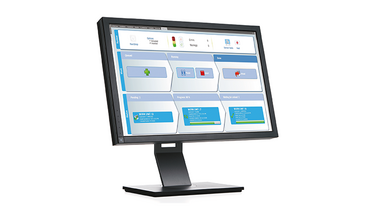
Real world impact of Momentum software
There are many examples of how Momentum software delivers real world results. One team using HPLC for plasma protein characterization increased throughput by around four times by automating their workflow with Momentum software. But an even bigger breakthrough came when they combined automation with digital analysis; by integrating automation with their own software for analyzing trace files, they saw an amazing 40–100 times increase in overall throughput.
In another lab, a robotic system keeps 10 ultra-high-throughput HPLC systems running around the clock – all orchestrated by Momentum software. When it is time to refresh buffers or reagents, the system manages those transitions without slowing down the workflow. For them, maximizing throughput is important and this setup has significantly accelerated their drug discovery and biomarker testing for protein markers.
Moderna spoke at SLAS 2024 about their use of Momentum software for hemagglutination inhibition assays in influenza research. Tasked with measuring immune responses to vaccines against different influenza strains, the team demonstrated how the software allowed them to double the study size, while needing fewer people and eliminating the need for weekend work. By moving away from manual processes, the same number of analysts can now run nearly four times as many tests per week. But perhaps more importantly, the failure rate dropped by a factor of 16 (from around 6 percent to just 0.37 percent).
Building the lab of the future
Workflow automation software is now a key driver for accelerating innovation and more rapidly delivering new products. Prior to 2020, many executives saw automation as a “nice-to-have” tactical effort, but the COVID-19 pandemic painted the importance of automation in a different light. Those companies that had already invested in automation were able to keep their research and clinical trials moving forward – even during lockdowns.
All labs of the future should be built on three core concepts: i) connect everything, ii) automate what you can (both physically and digitally), and iii) incorporate advanced tools, such as AI, machine learning, and mobile robotics.
You also need the right partner – one that will still be there in two, five, or ten years; after all, an automated and digital transformation can be a long journey. Thermo Fisher Scientific has both the scope and scale to commit to lasting relationships with our partners, providing the expertise and support needed to help labs evolve and grow over time.
Ultimately, the future of laboratory automation is about boosting efficiency, scalability, flexibility, and accuracy. It’s also about making sure people are used in the best way possible. Scientists bring creativity and insight – completely at odds with manual tasks that are repetitive, tedious, and prone to error. Ever evolving automation and AI will make the lab of the future an increasingly exciting place – where technology and human expertise come together to push the boundaries of discovery.
Dean Mulyk, Senior Manager for Product Management within the Automation Solutions business at Thermo Fisher Scientific








